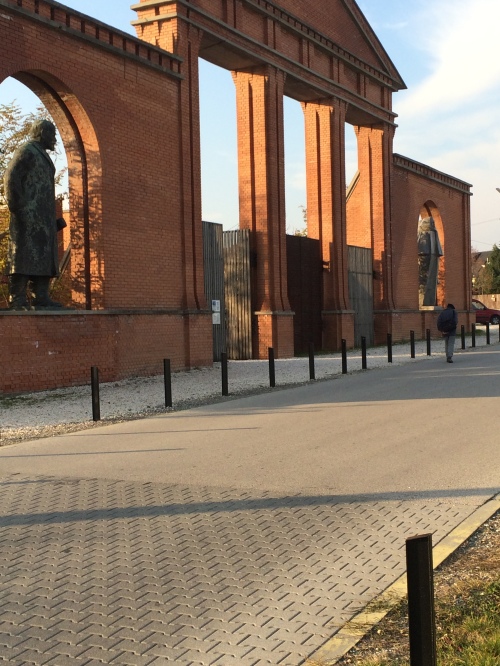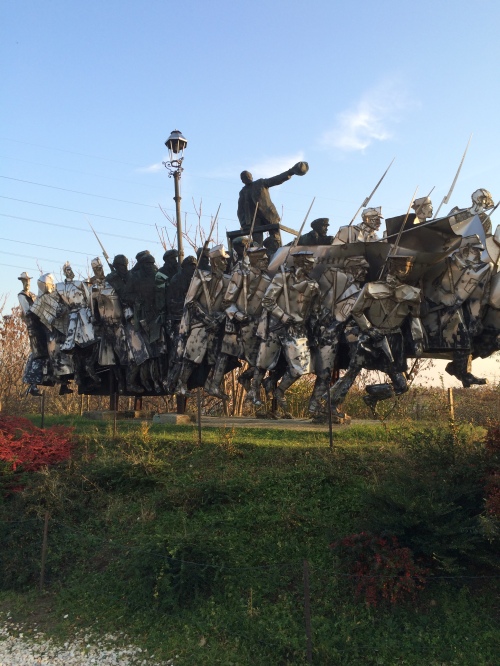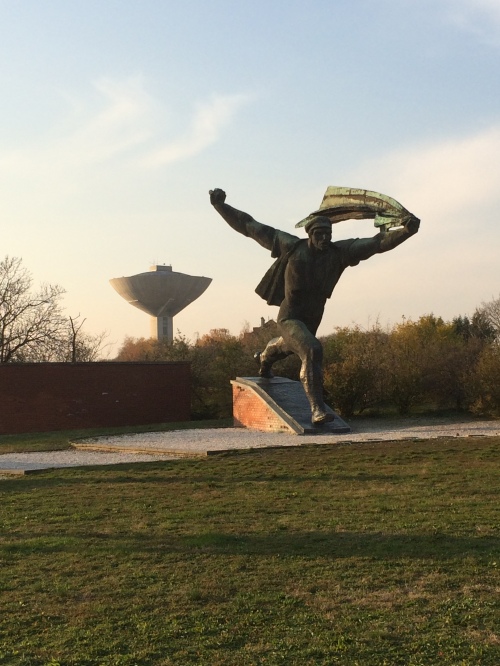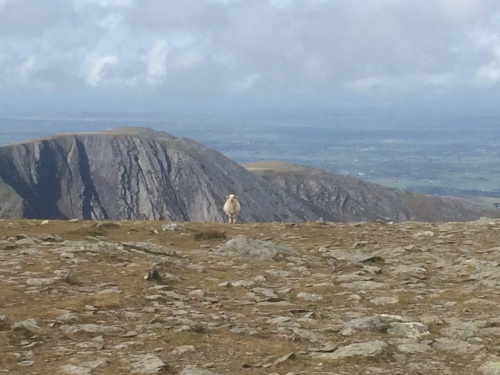
Pete was in a bad spot and it was my fault. We were climbing Pen Yr Ole Wen and it was easy compared to Tryfan the day before. We had clear trails, an early start, and – most importantly – sunshine instead of hurricane rain. About an hour and a half in and we thought we could see the summit, just past a little horseshoe gully. It ran upwards about twenty feet on a steep slope, and we didn’t think much of it. After all, we were experienced scramblers, having climbed one peak the day before, and Pete started up as I spotted him.
I followed when he was about halfway, and then Pete looked over the top of the rock and found nothing, no handhold and no solid branch to use, only scree and as he reached around for a way up a piece fell down and crashed next to my ear, like the stuff out of stories, and he was braced with a foot on two different rocks and we were stuck. He’d taken the left route and I moved right and tried to find a way up and around the scree impasse and as the edge of my boot rested on a crack no bigger than two fingers, I realized how dumb this was. It was the same feeling as I got when I’d be safely climbing in a gym, only to break out in a full body sweat and I’d taste bile in the back of my throat and realize how scared I was of falling.
But there was no rope, only a backpack, and falling was going to put us in a bad spot.
The right route had a better top: a few big rocks to use and an easier escape. I moved up and around and Pete had muscled his way up and over by the time I got to help. We sat for a moment and I started to laugh at the ridiculousness of it all, of how tiny of a distance we climbed and how terrifying it was for what was just a few minutes, but in those few minutes seemed like forever.
It’d been a false summit. Pete tightened his straps and climbed up the scree pile we were in. I followed, my shirt and hat streaked with sweat.
****
We bounced the idea around for a year. I’d met Pete in a course at King’s College and soon found that we enjoyed the outdoors. At least, I spoke of enjoying the outdoors. Pete actually did it. He’d been working on a mountain leadership course, which required a certain number of quality mountain days, and led cadets (boy scouts) on day hikes throughout the United Kingdom.
Despite our good intentions, Wales happened on a whim. Early in the autumn we’d been catching up over burgers and beer and I mentioned how I wanted to get out of London before it became too cold. Pete perked up. He’d been working on a film set for six weeks and it was his final day. He had time and money to spare, and started planning. I used it as an excuse to complete my trekking kit – I needed hiking poles – and I was concerned with basic elements such as, ‘Would Pete drink this kind of whiskey?’ Meanwhile, Pete had a relief map on his kitchen table and was cutting out sections of post-it notes to mark our trek.
It was a three-day project. We were to summit Tryfan and two other nearby peaks on the first day, and then spend the night at a campsite. The next morning, we’d pack up, leave the car, and hike into a lake just behind Carnedd Llewelyn and wild camp there. Pete had this all marked beautifully and for good reason – his father knew of our plans, and if we were to disappear, they’d know where to search.
I hadn’t thought of that part. It was the first of many times I was thankful Pete was there to guide me, because my usual philosophy – get going and figure it out on the way – had serious flaws when it came to backcountry hiking. I had the gear, and I was prepared for an emergency in the sense of having an emergency blanket and some food – but preparing my route ahead of time and letting someone know my location were beyond me.
The day before, Tryfan owned us. We picked a proper scrambling route up its north ridge, spending more time hauling ourselves over enormous piles of rock than we did on the occasional path. It’d all seemed easy at first and we made good time but as we climbed we became more exposed to the winds blowing in from the southeast. The dark gray clouds clustered around Tryfan’s peak as if waiting for an audience before the wind grew angry at their delay and pushed them hard down the valley, speeding out towards the Irish Sea. It was a sublime sight when sheltered; an angry one when not.
The views from Tryfan – when we had them – opened a book into a larger world. The green of Wales was something I’d not seen since traversing Ireland by bus. The world was the kind of green brought about by moisture – sometimes rain and often just air thick with water. It was marked by rock and the occasional path. High enough on Tryfan and we could see the village of Bethesda and further on the town of Bangor, the only places we were able to get cell service the entire time.
More than anything, the sky stood out. It looked as if the gods were fighting, with streaks of sunshine enclosed in columns of clouds. Billowing pillows of moisture would rumble across the sky, darkening the rock and grass below them only to be followed by a flash of warmth. The black and blue blended into purple, only dissipate and leave blue and gold for a few moments.
It was as if the wind saw us as a challenge, and once we submitted Tryfan, it lost. The clouds began to linger and rain started to fall, and by the time we made it back to the campground and set up the tent we were soaked, the tent was soaked, and the ground below it was halfway to bog-land. We found a hostel and Pete – knowing the area about as well as one can from staring at it on a kitchen table – pulled out a map again and we altered course. No wild camping, but a day hike to the second-highest peak in Snowdonia National Park, Carnedd Llewelyn.
So we found ourselves climbing up a steep slab of rock, thinking we were near the first peak of the day, not even the major one, only to find we were disoriented. The real peak appeared in the distance.
The most consistent things in Wales were wind, sheep droppings, and false peaks.
* * *
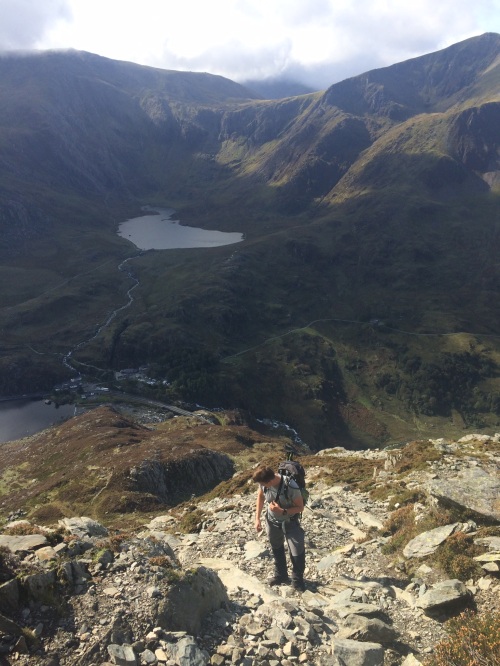
We peaked Pen Yr Ole Wen and kept moving for Carnedd Llewelyn, first moving up Carnedd Dafydd and sticking largely to the path going forward. We fell in with an older gentleman named Andy, who saw us struggling as we climbed and had a good laugh about it as he’d walked up the path we ignored, dealing with the monotony of switchbacks as we’d dealt with the terror of tipping over.
Pete started chatting, asking about mountains and experiences around the valley. Andy was from the south, somewhere in Cornwall where there were no mountains, just sea and hills covered in tall grass. He was, however, a solid climber. He was thin, almost scrawny as he stood and talked to us in a quiet voice, but when his shoulders moved and he pointed out a specific peak to Pete and I, underneath he was all muscle.
He’d spent the morning climbing Tryfan, the peak we’d submitted the day before, and he was on his way to the top of Carnedd Dafydd. Pete asked the same question of everybody we encountered who climbed Tryfan. “North Ridge?”
Andy smiled, as if he knew the question was coming. He hadn’t gone fully up the north ridge, but it was the easiest path to take. Whereas the day before the wind and rain and pounded down on Pete and I, Andy had an easier go of the mountain.
“If you live down south, you can’t get much training for the mountains here,” Pete observed.
Andy let us in on his secret. “I live on the 13th story in a tower, and I never use the lift. Usually I climb it twice, three times a day. I take the lift going down, of course,” as if walking 13 flights down was an absurd idea.
The view from the top of Carnedd Dafydd revealed a different world. The path behind us didn’t lead to civilization, but it did lead to a road. Modern cars moved along modern pavement, a hostel with a warm bed, and beer all lay back down in the valley. The other side brought forth the wild. We stood on the edge of a large gully, or a small valley. Clouds rushed down, blown from the southeast, pushing towards the sea and we stood on the edge of a ride which forced them up and over, a wave effect in the sky. Their parting revealed the greenest of fields marked by the black soil of a lake, looking like a heart as streams raced away from it, further down into the valley below.
We looked down into a foggy, dark crater, the clouds rolling in and shading the area much like a child might pull the covers over his head to block the approaching day. Off on our left, towards the west, was a different picture, golden sunlight mixing with emerald hills, a perfect scene, with gray houses and thatched roofs just beyond. The blue sea stood proudly in the sunlight, absorbing the rays on a calm surface broken only by an offshore wind farm.
Pete and I weren’t thinking of descending into the dark. We bid our goodbyes to Andy, who was calling it a day and headed back to the hostel. We were headed to Carnedd Llewelyn, the second-highest peak in Wales and the highest in the area we found ourselves. Pete’s best guess was around another hour or two of walking.
We headed off of Carnedd Dafydd and down onto a ridge leading further north. From above, the clouds looked majestic, wales breaking the ocean surface; along the ridge where the valley ended, the wind vented its anger at reaching an obstacle on us. We were blown to the left and started to duck in and out of obstacles, working to say on the leeward side. A large carin stood in the middle of the ridge, a small mountain in itself. We hid from the wind for a moment, watching the clouds roll up and over us.
Carins are giant piles of rock. I’d seen them during our hike the day before without knowing what they were. Pete explained that they were points of reference, used for people in the valley to determine approximate distance. They were in a number of places along the mountain ridges, although I couldn’t imagine who moved enough rock to create such hills. It was massive, enough to be another small peak.
It was not a false peak, and we seemed to have escaped the problem. Carnedd Llewelyn spent the morning with a hat of clouds, and as we started the long hike up it began to clear. The mask of gray we’d been moving through dropped and revealed a brown footpath bordered by the stark green of grass. Brown patches began to appear, and the path disappeared at certain points, leaving us to scramble over rocks and dirt. Unlike the initial climb of the day, Llewelyn was not difficult. It was a long, uphill slog.
Heads down, we kept moving up until the land began to level and the wind picked up, and when I looked up I saw a group of four people leaving a rocky alcove and a beautiful view of the sea. The top of Carnedd Llewelyn was a small plateau and in the early afternoon we said hello to the group leaving and took their place and unpacked food and settled in for a rest.
Long ago, this area of Wales was under massive amounts of water in the Southern Hemisphere. The modern peaks are the result of volcanic activity followed by centuries of glaciation, which gave the region its modern look – tall, steep peaks surrounded by deep valleys, all smoothed. Most of the mountains around us lacked steep cliff faces and sharp edges – the route we climbed earlier in the day was one of the more difficult ways up, and aside from the eerie climb, we made it in decent shape.
The extent to which glaciers shaped Snowdonia National Park became apparent after we finished lunch. Pete brought enough Army rations to keep us alive for two weeks, and we warmed two bags of food over a gas stove as we huddled from the wind and the returning fog. The outcropping was nothing more than a sheep shelter, though I was never clear if it was for the sheep or the sheep-herder. It was a brilliant setup though, borne of generations of experience – the curve of the rock perfectly blocked the oncoming wind.
The extent of the ancient glaciation set it as we spent time in the shelter. The top of Llewelyn was flat, old stone pounded away until it made for a good sized plateau. Looking out over the valleys below us, we saw an astonishing view of Wales – deep, U-shaped valleys with streams roaming towards the horizon, a black and blue path leading the sea and eternity. The light shaded the valley in forms of gold and green, and made the black soil mark the stream as if painted there. After we packed up and pulled our hoods over our heads, we walked around the plateau to check out the place we would have camped – a little valley not far from the top, a place we would have needed to pack in gear and water.
A day hike uphill was far easier than humping everything we brought with us. The campsite Pete had picked out was isolated – the water wasn’t safe to drink nearby – but it was on the leeward side of the mountains, facing down the valley and out towards the sea. A small lake sat next to the campsite with a small stream running forever into the horizon. We stared at it for a few moments, the sun beaming in our faces and rain pelting us in the back, before turning around and heading back.
***

The tops of the mountains had no woods, and we weren’t out of them yet. Looking back over the fog to the false peak we’d summited two hours earlier, Pete headed down the far side of the mountain, along another spine leading – eventually – towards the A5 motorway and the path back home. We were a bit more sheltered from the wind, and the air began to clear as we moved away from Llewelyn and the sea. The sea was still there, but the dominance of the interior of Wales made itself known. It seemed we were on one of a hundred mountain spines, there for no reason except to be in the mountains. Parts of the trail looked down onto something sublime and dangerous – the greenest fields I’d ever seen on the steepest mountain sides. As much as I wanted to reach out and touch them, a wrong step would lead to disaster.
The roar of jet engines accompanied us. I’d not expected this, so I asked Pete what it was.
“The RAF has a training base in Holyhead,” he mentioned. That was neat to me, so I asked more.
His Uncle used to be stationed there, so Pete knew a bit about RAF Valley. A number of Hawk jets were stationed there, which was the cause of the engine roar we kept hearing. As he told me this, a helicopter appeared.
“They also run Search and Rescue training,” he said.
As we watched, the helicopter moved slowly into position over the small lake we were trying to get around. Waves appeared in the water as the helicopter came to a hover and dropped a line out, simulating a water rescue. It hovered for a few minutes and Pete and I stood and watched it, before pulling the line in and moving around for another pass. Eventually it sped off back down the valley, the sound of its rotors engulfed by the sound of Hawk jets, and Pete and I started walking again.
We dropped down two hundred meters in an hour, and started our curve around a small lake. A few muddy areas presented themselves. Pete had a good set of leather boots, while I had a more basic set of hiking boots – lots of mesh. The more we descended, the more mud and marsh we encountered. We found a path off to the side of the ridge and started down, skipping over piles of ice and rock, with a small road in the distance. The last stretch was ominous – we scrambled over an open field, Pete rushing headfirst across it while I picked my steps, aiming for dry ground. We met at the road.
“We’re drifting a little off,” Pete said, indicating the direction we needed to walk. It was not back down the dry pavement, but up and over a grassy berm.
I wasn’t about to back down and complain about my slightly-wet feet.
We pulled ourselves up and over the grass and my slightly wet feet no longer mattered, because looking out across the path Pete picked out, I could already feel how wet my socks were going to be.
Pete stepped out and barged headfirst into the middle of the field, mud spitting off his shoes. His leather boots were going to hold up well over this mess, and as he walked further away I decided to try and follow on some sort of a less-soaking path. His direct route became my bounding from rock to dry patch. This worked for a while. I was a ways behind Pete but was keeping steady until one missed step caused my boot to sink all the way to my ankle, and my sock became a wet rag wrapped around my foot.
Well, fuck it
I followed Pete across the bog, my boots sticking with every step. Crossing the field took just under thirty minutes. It was thirty minutes of wet. The rain had stopped coming down quite as hard, but the air was heavy with water and we swam through the Welsh sky. A portion of my brown boots was darkened when I first stepped into the mud, but that line was now gone. My whole boot was a wet, soggy mess, my socks no better. Pete’s confident strides put him far out in front, a speck on the other end of the field and I was overwhelmed by two thoughts:
If he is there, how much further do I still have to go? I can’t fucking believe I don’t have waterproof boots for this.
It was a beautiful mess.
The ground began to harden and piles of manure began to appear. It was as if we’d been cast adrift across the field and we’d just sighted a piece of driftwood with a bird resting on it; it signaled the end of the bog. The A5 appeared in the distance, as did the lake we’d skirted earlier in the day. A fence appeared with a sign we couldn’t quite read. The only way there was across an expanse of manure.
Pete looked at me. I looked back and swore. There wasn’t much I could do except walk across it.
The sign seemed to say that beyond this was a private home; do not go left. There was a path down to the road around the property. The arrow pointed to the right. So we went right, only to find ourselves confronted by an angry farmer.
“This is private property. You’re not supposed to be here.”
Pete lept to our defense. “We were just trying to get back to the A5 and the sign said to follow the path this way.”
The man seemed to be early-30’s, with beard barely more than stubble. He shook his head. “It said don’t go this way. You’ll have to go back and follow the road around to the left.”
I looked down his driveway. The highway was less than a half-mile away. The thought of backtracking a mile and hiking three more was not appealing. I lept in. “Mate, I swear the sign was pointed this way. It must’ve been turned around.”
Both Pete and the farmer stared at me and I proceeded to shut up. They kept talking. I thought back to hiking Big Almaty Mountain a few years earlier and having to bribe a set of guards and cursed myself for leaving my cash at the hostel. Right now it seemed like the fastest way out.
Waterproof boots. Always bring cash.
I think the man eventually grew tired of us. He pointed down the road and told us to go ahead, but never come back this way again. We thanked him a hundred times over and set out down the long driveway, and as we passed through some trees and next to what seemed like a hotel, the rain started to come down again, increasing as we walked down the A5 to the hostel. 14 miles of wind and rain, mud and manure later, we were done.
***

One of the most quoted Jack Kerouac lines is the one about ‘climbing that goddamn mountain.’ I have always read that somewhat figuratively, a modern take on Marcus Aurelius: “The impediment to action advances action. What stands in the way becomes the way.” Whatever that mountain in life is, go climb it.
Yet, throughout my life, there have been figures who have taken that sentiment literally and asked me to come along and my responses are always the same:
Yes
Why don’t I do this more often?
We were never in danger. Pete didn’t fall and the farmer never sent us back and I never developed any rare Welsh disease from walking ankle deep through a field of manure. I’d brought a bunch of hiking stuff to London but never really knew what to do or where to go, so my mountain became trying to see every borough in London on foot (this was an insane goal).
The night before we’d stood looking up at the mountains. From the hostel, the path led through some trees and to the top of a small hill. We stood there with cigars in the damp cold, looking up at a farmhouse and a fence which ran the length of a hull far above us.
Pete spoke first. “Have you ever heard of Hunted?”
I had no idea what it was, and told him. He began to explain it was a reality show in the UK in which teams of two people would attempt to evade capture. They had to spend periods of two weeks or more running from the authorities – teams of retired police or intelligence officers.
The idea seemed very cool, and I told him as such. “I’d also be caught in about two days, because I stand out in a crowd pretty well.”
Pete laughed at at that. In one of the seasons he watched a teams won by spending two weeks cycling the canals of London. “If I had to do it, I’d do it here. Backcountry camp and try to stay out here for weeks.”
After Wales, seeing its peaks and valleys, carins and rivers; after trekking across its bogs and scrambling up its mountains, I think Pete would have won.

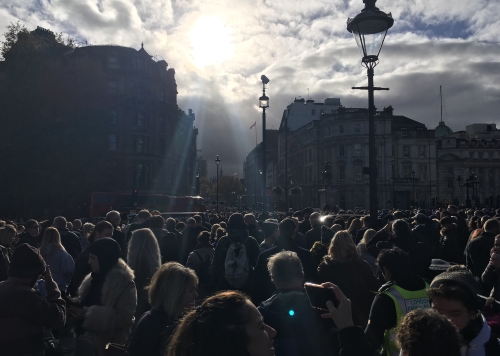
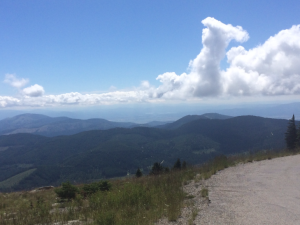


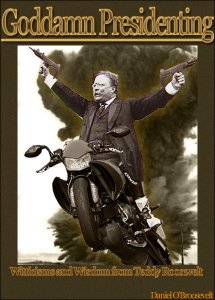


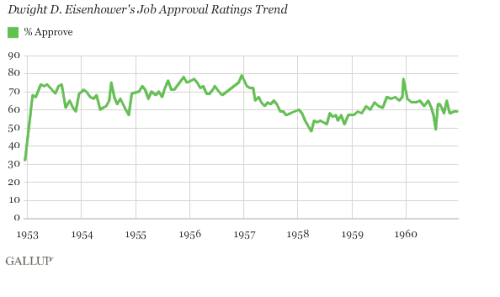
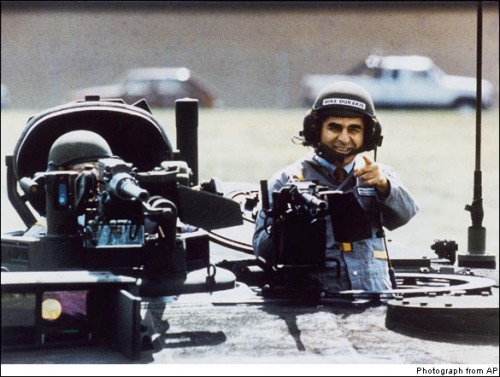

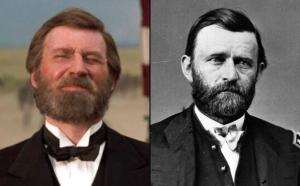



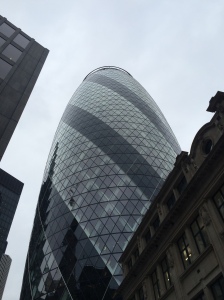





![By Senior Master Sgt. Thomas Meneguin, USAF [Public domain], via Wikimedia Commons](https://cousindampier.files.wordpress.com/2016/10/crowd_at_national_mall_for_obama_inauguration_1-20-09_hires_090120-f-6184m-007a.jpg?w=500&h=333)

